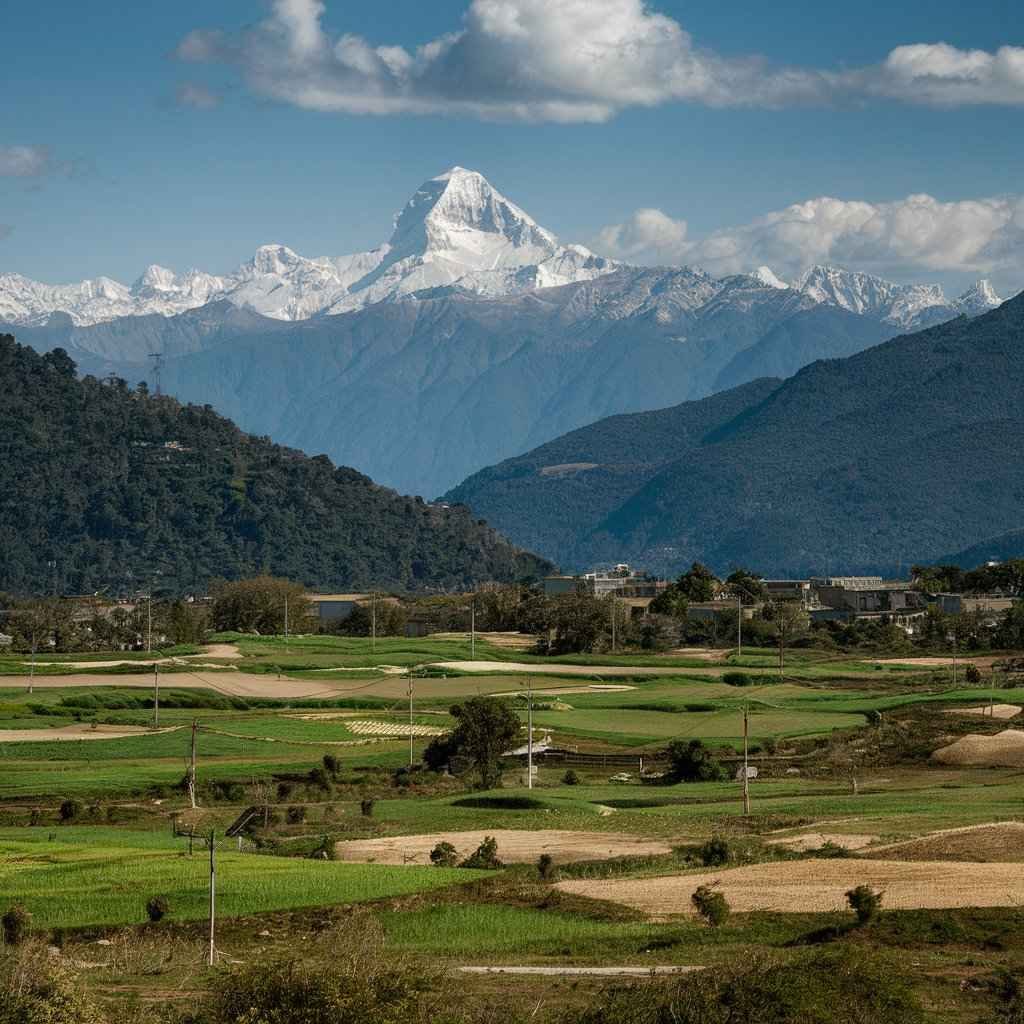Agro-climatic zoning in Nepal divides the country’s different landscapes into distinct agricultural zones based on height, temperature, rainfall, and soil type. These zones—Terai, Siwalik, Middle Hill, High Hill, Mountain, and High Mountain—all contribute to better crop choices, resource management, and sustainable farming methods. Understanding and utilizing these zones allows farmers and policymakers to raise productivity, manage resources more efficiently, and build resilience to climate unpredictability and catastrophic weather events.
Table of Contents
Introduction
Nepal, a landlocked nation nestled amidst the majestic Himalayas, boasts a remarkable diversity in its topography, climate, and consequently, agriculture. This diversity necessitates a nuanced understanding of the country’s agro-ecological zones, which are regions delineated by factors like altitude, temperature, rainfall patterns, and soil characteristics. These zones significantly influence what crops can be successfully cultivated and how agricultural practices are adapted.
Agro-climatic Zones of Nepal

A first approach to understanding Nepal’s agro-climatic zones is through a broad classification system that divides the country into three major regions based on elevation:
1. Terai (Lowlands):
This southernmost zone, bordering India, comprises the flat and fertile plains. It enjoys a subtropical climate with distinct seasons – hot summers, mild winters, and abundant rainfall, primarily fueled by the monsoon. The fertile Gangetic alluvium deposited by rivers like the Ganges and Kosi contributes to the region’s agricultural potential. Major crops cultivated here include rice, the staple food grain, along with sugarcane, jute, a natural fiber used for textiles, maize (corn), and wheat.
2. Hills (Mid-hills):
This central hilly region, encompassing most of Nepal’s land area, presents a fascinating tapestry of climates. As you move up in altitude, the climate transitions from subtropical at lower elevations to cool temperate at higher elevations. This variation significantly impacts agricultural practices. Key crops in the Hills zone include rice, particularly in terraced fields, maize, wheat, finger millet, a nutritious and drought-resistant grain, potato, a high-altitude crop, and barley, another high-altitude crop.
3. High Mountains (High Himalayas):
The northernmost zone is characterized by high altitudes, starting from approximately 4,000 meters above sea level, rugged terrain, and a cold climate. Due to the harsh conditions, with short growing seasons and limited arable land, agriculture becomes a challenging endeavor. However, in suitable pockets with milder microclimates, barley, buckwheat, a pseudo-cereal well-suited to high altitudes, and some vegetables are cultivated.
Importance of Agro-Climatic Zoning
Understanding Nepal’s agro-climatic zones offers a multitude of benefits:
1. Informed Decision-Making for Farmers:
By understanding the climatic and ecological specificities of their zone, farmers can make informed decisions about which crops to cultivate, what planting practices to adopt, and how to manage their land for optimal productivity. This can lead to increased agricultural yields, improved livelihoods for farmers, and overall agricultural development.
2. Targeted Policy Development:
Policymakers can leverage agro-climatic zoning to develop targeted agricultural development programs and interventions suited to the specific needs of each zone. This could involve promoting drought-resistant crops in zones prone to water scarcity, providing subsidies for irrigation equipment in zones with erratic rainfall, or introducing new technologies and crop varieties suitable for specific soil types and temperature regimes.
3. Sustainable Land Management:
Agro-climatic zoning helps promote sustainable land management practices. By understanding the vulnerabilities of each zone, such as soil erosion in the Hills or potential for landslides in the High Mountains, appropriate measures can be taken to conserve soil and prevent environmental degradation.
4. Optimized crop selection:
Agro-climatic zoning enables farmers to select the most appropriate crops for their individual region, resulting in higher yields and higher quality produce. Farmers can maximize growth and output by tailoring crops to the local climate and soil.
5. Research and development:
Zoning provides a framework for agricultural research, allowing scientists to create novel crop types, farming techniques, and pest control measures tailored to certain climates and areas.
Frequently Asked Question(FAQ)
What is agro-climatic zoning?
Agro-climatic zoning is the division of land into various zones depending on climatic and environmental parameters such as altitude, temperature, rainfall, and soil types in order to optimise agricultural techniques.
Why is agro-climatic zoning important in Nepal?
Because of Nepal’s diverse topography and climate, agro-climatic zoning is essential for optimizing crop selection, resource management, and sustainable agricultural practices, as well as boosting resistance to climate variability and extreme weather events.
Related Articles

